AWS News Blog
Resource Groups and Tagging for AWS
For many years, AWS customers have used tags to organize their EC2 resources (instances, images, load balancers, security groups, and so forth), RDS resources (DB instances, option groups, and more), VPC resources (gateways, option sets, network ACLS, subnets, and the like) Route 53 health checks, and S3 buckets. Tags are used to label, collect, and organize resources and become increasingly important as you use AWS in larger and more sophisticated ways. For example, you can tag relevant resources and then take advantage AWS Cost Allocation for Customer Bills.
Today we are making tags even more useful with the introduction of a pair of new features: Resource Groups and a Tag Editor. Resource Groups allow you to easily create, maintain, and view a collection of resources that share common tags. The new Tag Editor allows you to easily manage tags across services and Regions. You can search globally and edit tags in bulk, all with a couple of clicks.
Let’s take a closer look at both of these cool new features! Both of them can be accessed from the new AWS menu:
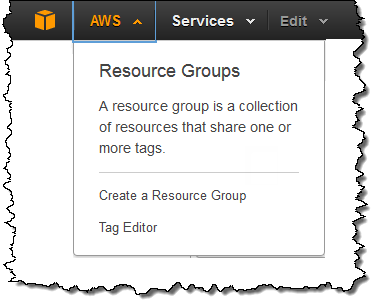
Tag Editor
Until today, when you decided to start making use of tags, you were faced with the task of stepping through your AWS resources on a service-by-service, region-by-region basis and applying tags as needed. The new Tag Editor centralizes and streamlines this process.
Let’s say I want to find and then tag all of my EC2 resources. The first step is to open up the Tag Editor and search for them:

The Tag Editor searches my account for the desired resource types across all of the selected Regions and then displays all of the matches:
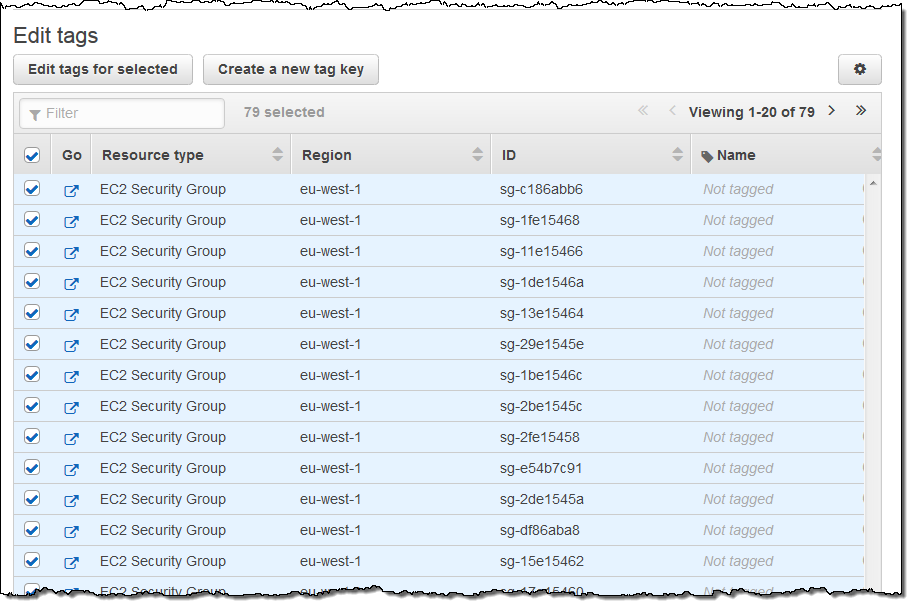
I can then select all or some of the resources for editing. When I click on the Edit tags for selected button, I can see and edit existing tags and add new ones. I can also see existing System tags:
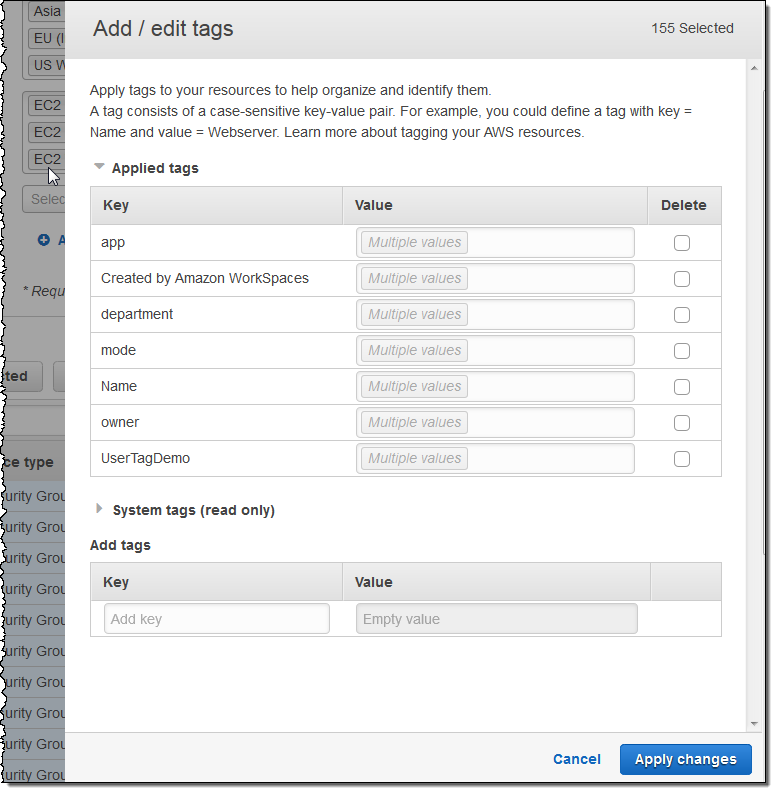
I can see which values are in use for a particular tag by simply hovering over the Multiple values indicator:
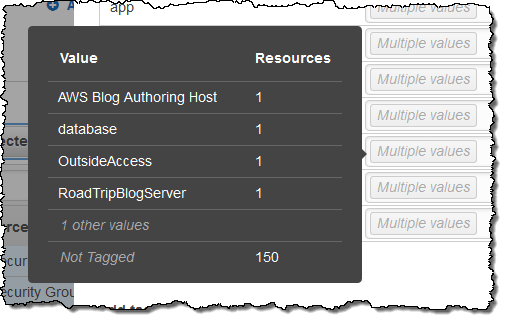
I can change multiple tags simultaneously (changes take effect when I click on Apply changes):
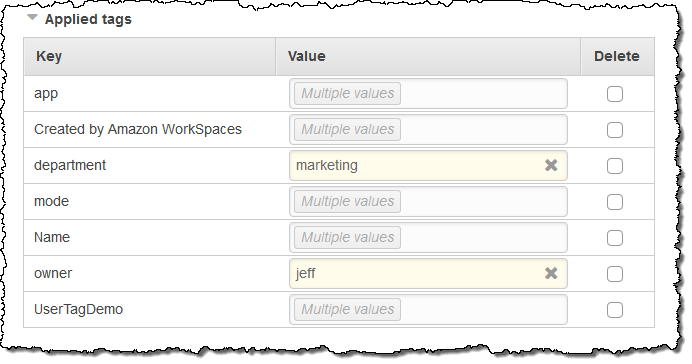
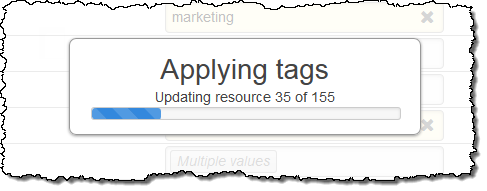
Resource Groups
A Resource Group is a collection of resources that shares one or more tags. It can span Regions and services and can be used to create what is, in effect, a custom console that organizes and consolidates the information you need on a per-project basis.
You can create a new Resource Group with a couple of clicks. I tagged a bunch of my AWS resources with Service and then added the EC2 instances, DB instances, and S3 buckets to a new Resource Group:
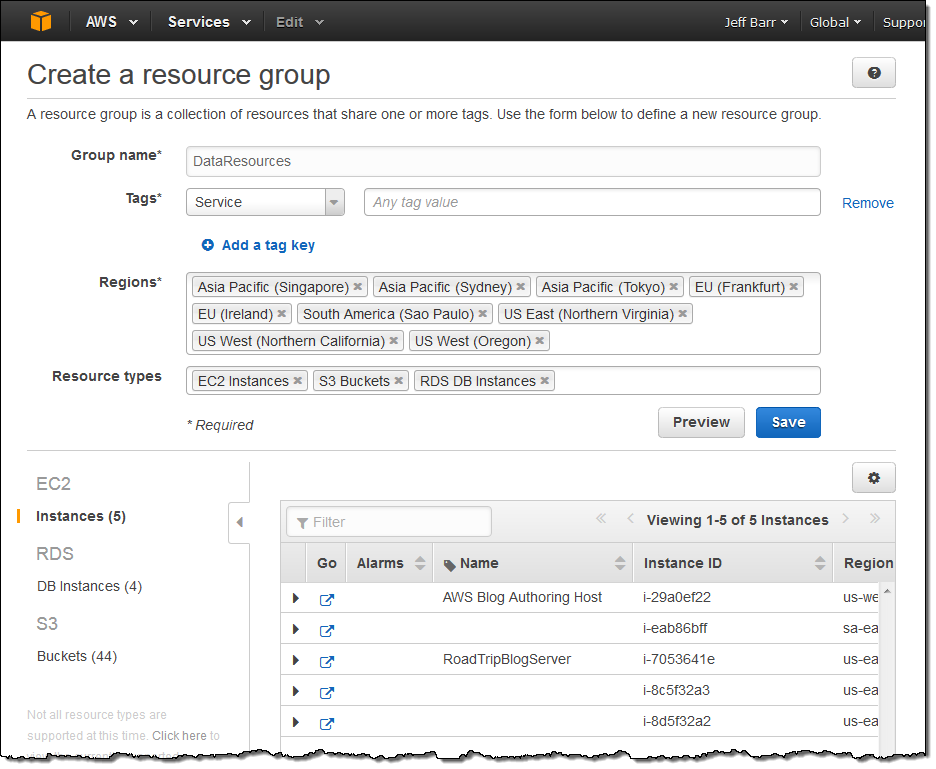
My Resource Groups are available from within the AWS menu:
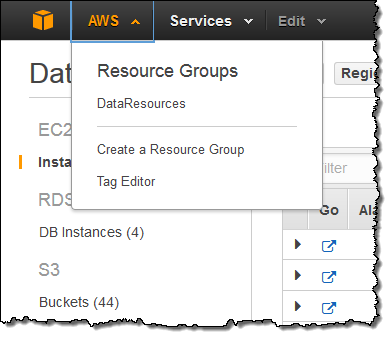
Selecting a group displays information about the resources in the group, including any alarm conditions (as appropriate):
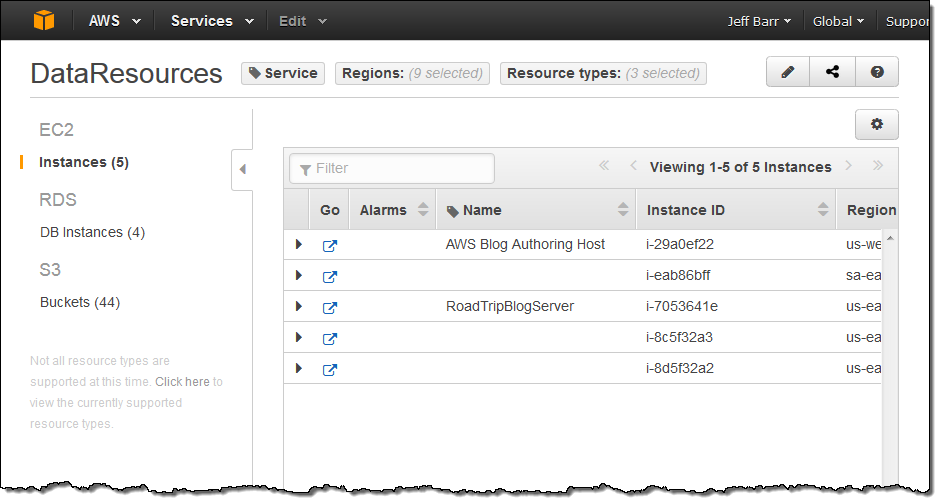
This information can be further expanded:
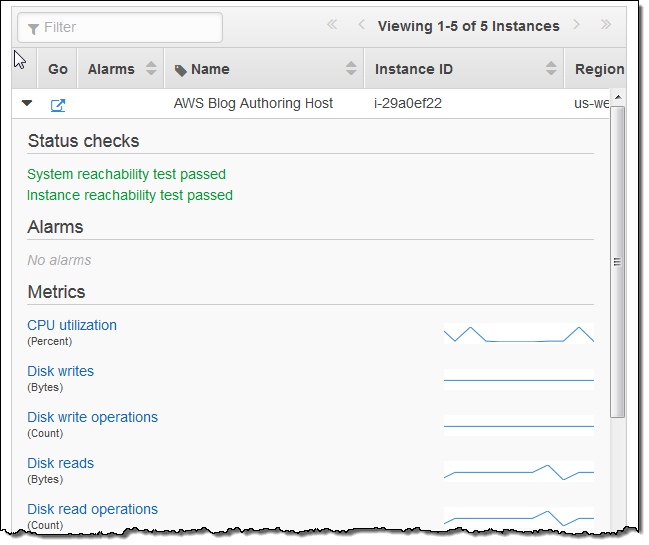
Each identity within an AWS account can have its own set of Resource Groups. They can be shared between identities by clicking on the Share icon:
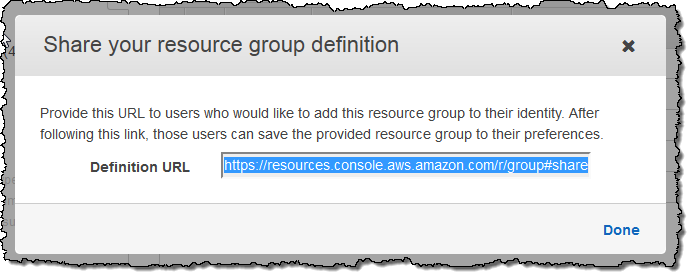
Down the Road
We are, as usual, very interested in your feedback on this feature and would love to hear from you! To get in touch, simply open up the Resource Groups Console and click on the Feedback button.
Available Now
Resource Groups and the Tag Editor are available now and you can start using them today!
— Jeff;